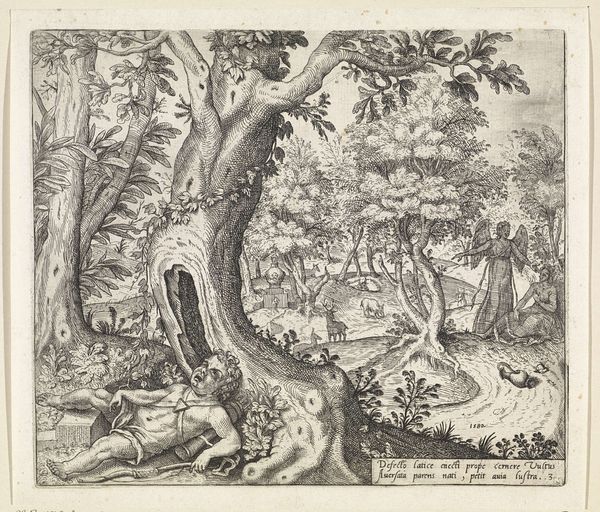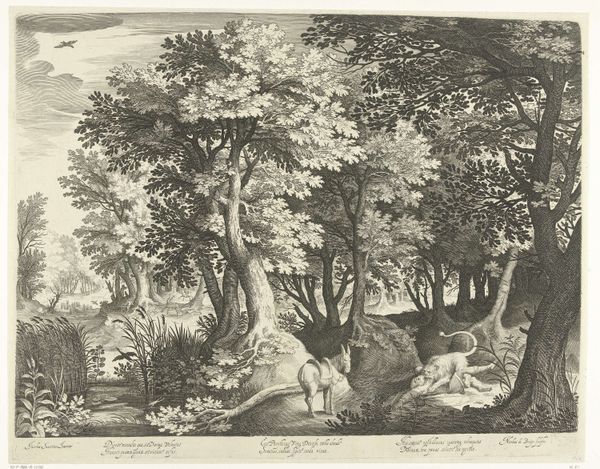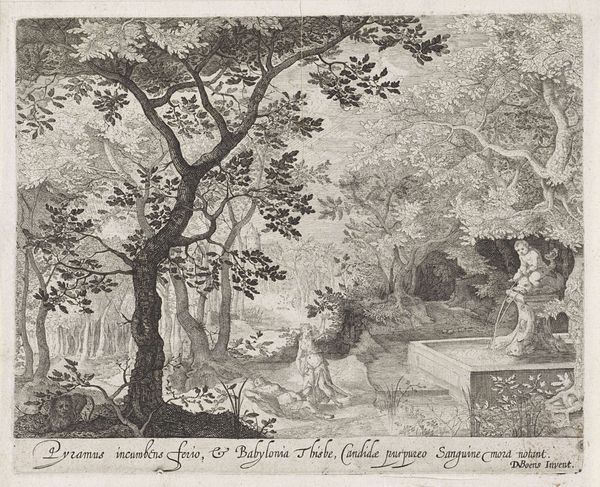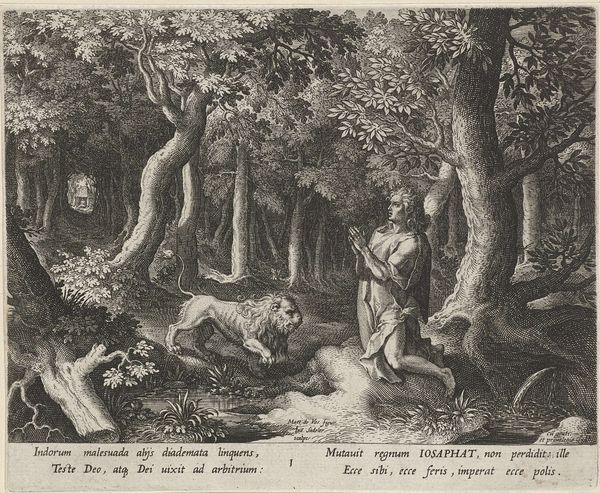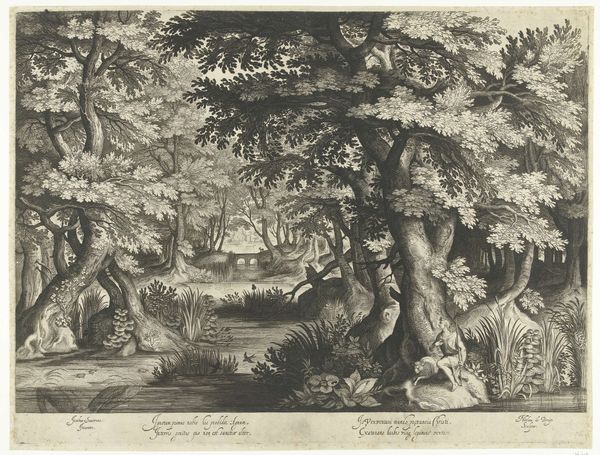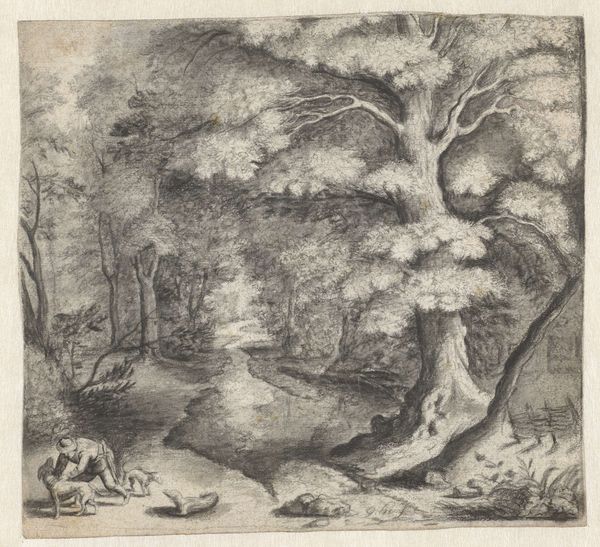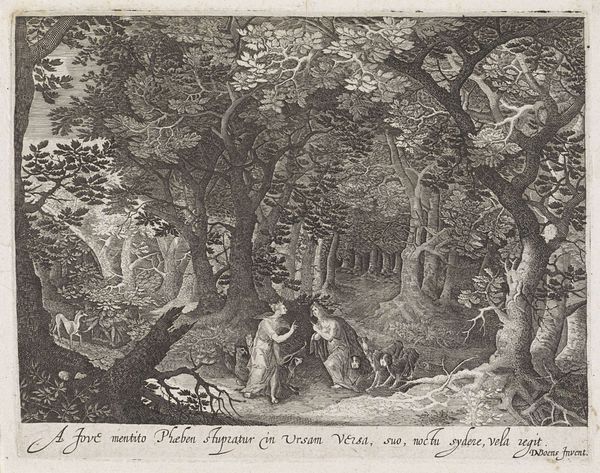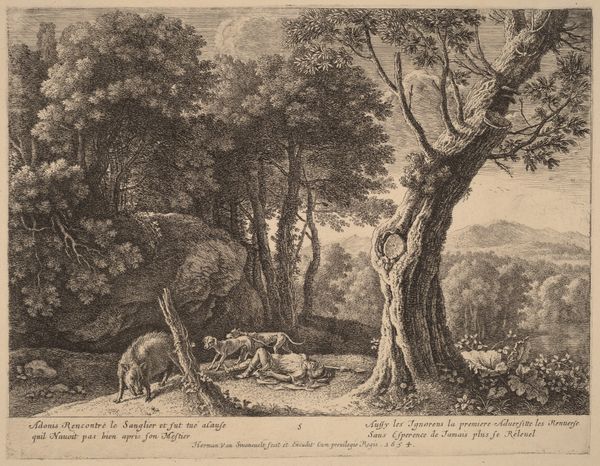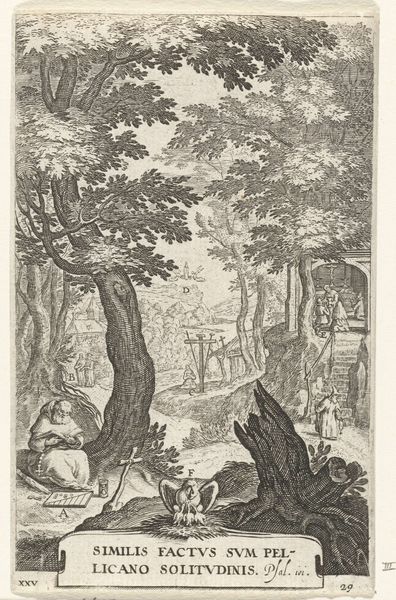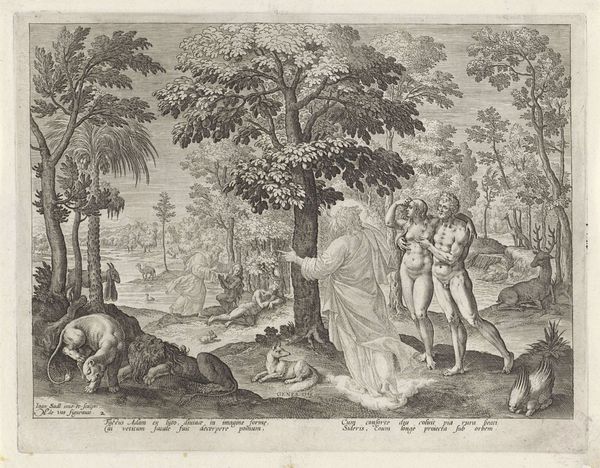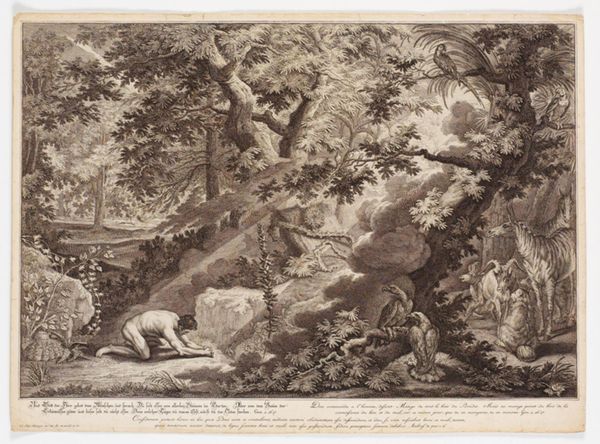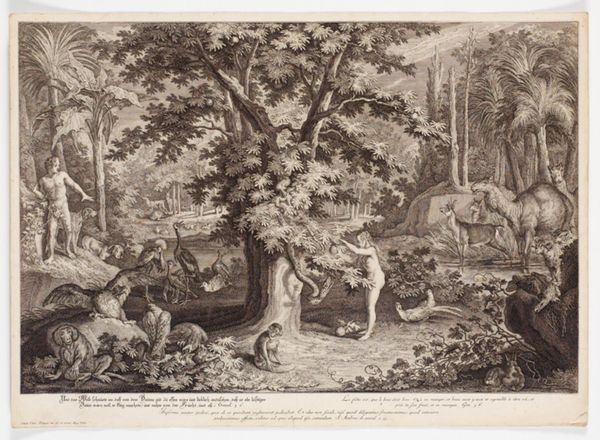
drawing, print, ink, pen
#
drawing
#
baroque
#
pen drawing
# print
#
landscape
#
ink
#
pen
Dimensions: height 177 mm, width 226 mm
Copyright: Rijks Museum: Open Domain
Curator: Let’s turn our attention to “God Appears to Moses on Mount Horeb.” This drawing, executed in ink and pen, is attributed to Nicolaes de Bruyn and thought to originate sometime between 1581 and 1656. Editor: It's remarkably intricate, even unsettling. The density of the forest is palpable, pressing down on Moses. There's an almost claustrophobic quality created by the artist's skillful manipulation of line and texture. Curator: The Baroque landscape tradition certainly informs De Bruyn's composition. Note the almost overwhelming detail—the profusion of leaves, the carefully etched textures of the tree bark, the meticulous depiction of each sheep. It creates a visual tapestry where foreground and background merge. Editor: Speaking of sheep, they act as emblems of innocence and piety, their very presence highlighting Moses' humble beginnings. The burning bush is almost secondary at first glance. Yet, this detail signals transformation and the revelation of divine power. Curator: Precisely. The landscape functions as more than a backdrop; it mirrors the internal landscape of Moses himself—the bewilderment, the insignificance of the individual confronting the immensity of the divine will. The contrast between the detailed earthly setting and the radiant, almost abstract representation of God's presence is especially effective. Editor: Consider the symbolism inherent in that divine light breaking through the forest canopy. It suggests not only enlightenment, but also a disruption of the natural order. Moses' kneeling posture indicates total submission, a theme so powerfully communicated in Baroque art. It is the exact moment that dictates his destiny as liberator. Curator: Indeed. De Bruyn expertly leverages light and shadow to emphasize the pivotal moment. We can almost see Moses’ transformation unfolding before us, mirroring, through the image, the narrative's weight and impact upon salvation history. Editor: A rather somber portrayal, and yet powerful in its commitment to its underlying message. It certainly demands contemplation on themes of divine encounter and human purpose.
Comments
No comments
Be the first to comment and join the conversation on the ultimate creative platform.
